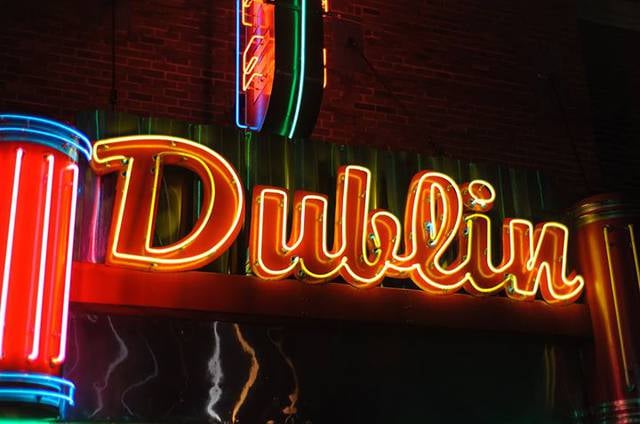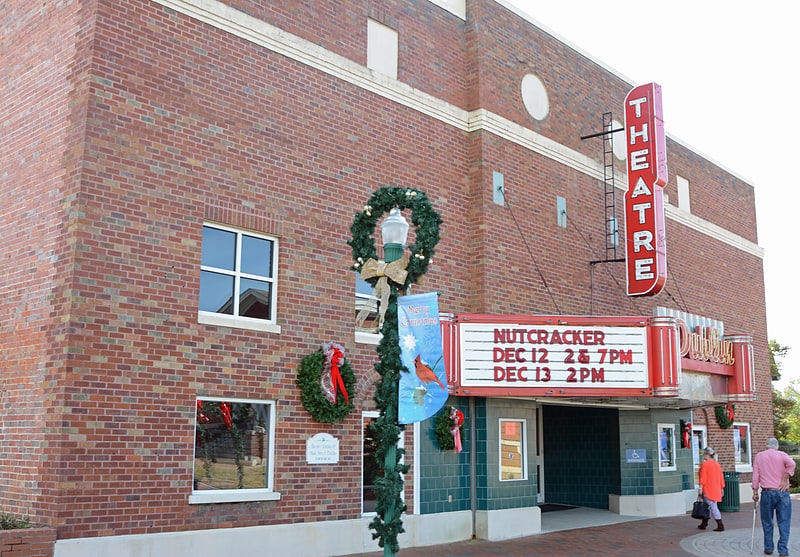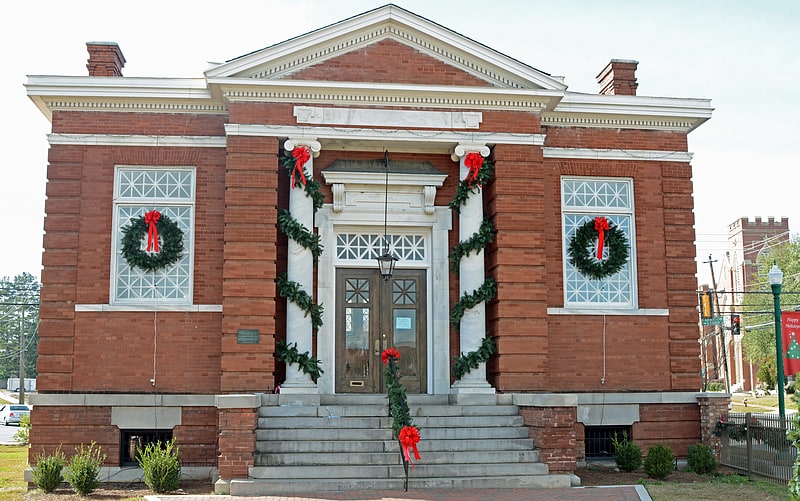Discover 4 hidden attractions, cool sights, and unusual things to do in Dublin (United States). Don't miss out on these must-see attractions: Theatre Dublin, Dublin Commercial Historic District, and Carnegie Library. Also, be sure to include Stubbs Park–Stonewall Street Historic District in your itinerary.
Below, you can find the list of the most amazing places you should visit in Dublin (Georgia).
Table of Contents
Theatre Dublin

Concerts and shows, Concert hall, Theater
Address: 314 Academy Ave, 31021-5220 Dublin
Dublin Commercial Historic District

The Dublin Commercial Historic District is a 32 acres historic district roughly centered on Jackson Ave. and Lawrence St. in Dublin in Laurens County, Georgia. It was listed on the National Register of Historic Places in 2002. The district included 76 contributing buildings, one contributing structure, and one contributing object.
It covers the historic core of the town of Dublin, which was incorporated in 1812 and was laid out in a gridiron pattern. Streets were named after U.S. presidents and after Revolutionary War and War of 1812 heroes.
The town plan
is an example of the Sparta-type county seat plan. The Sparta plan features a central courthouse square, but the square is given greater prominence by aligning major streets to run directly towards its center. This may occur on all four sides of the square, or as is the case in Dublin, two streets may approach the center while others intersect at the corners. The town was laid out in a gridiron pattern with the courthouse at the east end of Jackson Avenue, the main east-west street in the central business district that runs directly to the center of the square. The nonhistoric Laurens County courthouse, constructed in 1962, occupies the west side of the square while the Federal Building and United States Courthouse occupies the east side.
Notable buildings include:
- Christ Episcopal Church (1898), Gothic Revival
- Carnegie Library (1904), Neoclassical style, designed by Atlanta architects Morgan and Dillon, separately NRHP-listed
- First National Bank Building (1912), Classical Revival, seven stories tall (the tallest building in the district).
Carnegie Library

Building in Dublin, Georgia. The Carnegie Library in Dublin, Georgia is a building built in 1904. The funding for the building was provided largely by the philanthropist Andrew Carnegie who offered $10,000 as part of his educational program. The architectural company of Bruce, Morgan, and Dillon designed the building, and John A. Kelley was contacted for the construction.
The building was listed on the National Register of Historic Places in 1975. From 1904 to the 1960s it was used as the central library for the City of Dublin. From the 1970s through 2014, the building was home to the Laurens County Historical Society and Museum. It is currently used as a special event space and art gallery managed by the Dublin Downtown Development Authority.
It is included as a contributing building in the Dublin Commercial Historic District, National Register-listed in 2002.[2]
Stubbs Park–Stonewall Street Historic District

The Stubbs Park–Stonewall Street Historic District in Dublin, Georgia is a residential area that was listed on the National Register of Historic Places in 2002. The district has been a residential neighborhood since the 1910s and is bounded by West Moore Street, Lancaster Street, Marion Street, Academy Avenue and Roosevelt Street. The Dublin Historic Neighborhood Association was formed in 1995 to preserve and improve the neighborhood.[3]